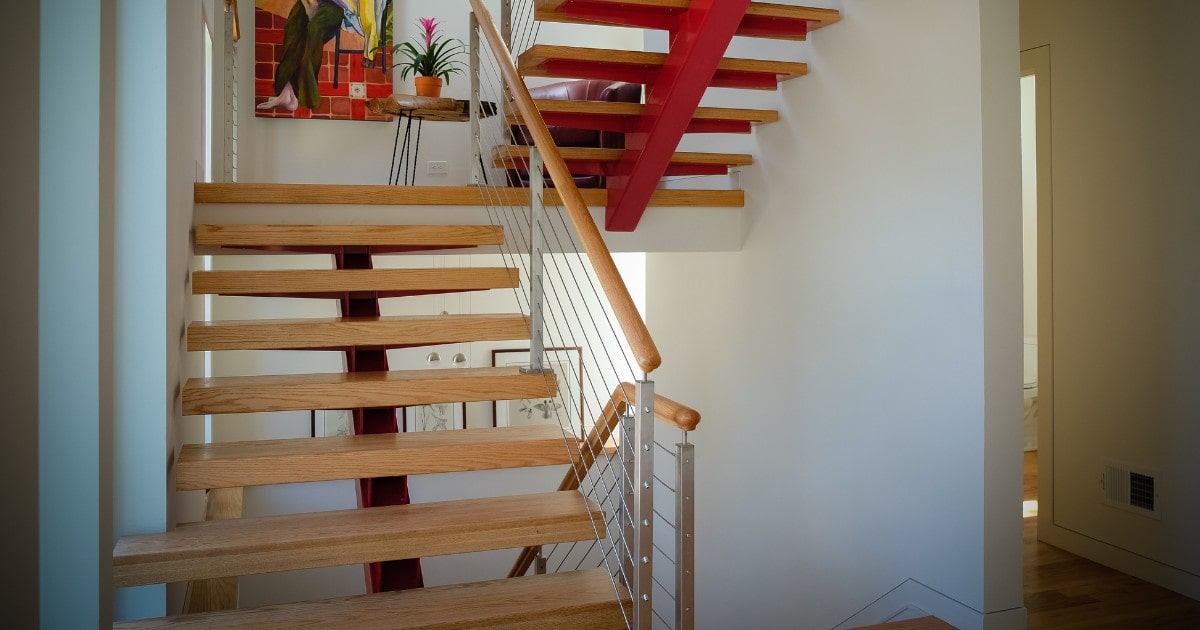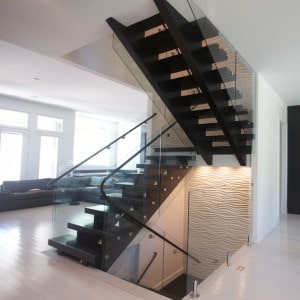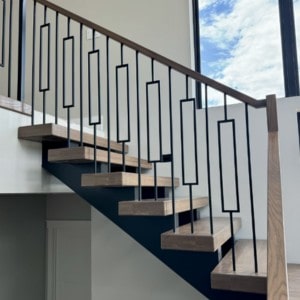Floating staircases have taken center stage in modern architecture, symbolizing the essence of minimalist design that resonates with architects and homeowners alike. Their elegant and ethereal look enhances any space, adding a striking visual element while maximizing the potential of interior design. The modern staircase design creates an inviting atmosphere, promoting light and openness—ideal for contemporary living. This article delves into the reasons behind the rising popularity of floating stairs, focusing on their visual appeal, functional advantages, and cutting-edge design trends.
The Visual Appeal of Floating Stairs
Floating staircases effortlessly merge form with function, making them a stunning addition to contemporary interiors. Their elegant and minimalist design enhances a room’s overall look, often as a captivating centerpiece. By eliminating bulky supports, these stairs evoke a sense of lightness that is perfect for open-concept layouts, maximizing the space beneath them for innovative uses like book storage or decorative displays for art pieces.
The principle of minimalism is integral to modern architectural design, emphasizing simplicity and sophistication. Floating stairways exemplify this by removing superfluous elements and showcasing sleek lines. They align with the ideals of contemporary aesthetics and balance out a wide range of interior styles, from industrial chic to Scandinavian simplicity. Architects increasingly opt for floating stairs to create balanced, harmonious living spaces that reflect minimalist values.
The transformative visual impact of floating stairs is significant; they foster an open environment that enhances the overall feel of a room. Natural light flows freely with these designs to amplify the perception of space, making even compact areas feel more expansive and welcoming. The combination of minimalist design and striking visual presence positions floating stairways as a top choice for architects, reinforcing the notion that less can be more in creating functional beauty.
Practical Advantages of Floating Stairs
Beyond their aesthetic allure, floating stairs offer many practical benefits, making them a favored option for architects, particularly in minimalist designs. Their capacity to save space is the key advantage. Traditional stairs can dominate floor layouts, often creating a cramped feel in smaller homes. In contrast, the sleek design of floating staircases creates the illusion of more space, allowing for improved flow and usability in tight quarters.
Floating stairs also enhance natural light and openness within a setting. Their lack of bulky railings and solid structures promotes light distribution, resulting in a brighter, more inviting atmosphere. This open design amplifies spatial perception and cultivates a sense of continuity among different home areas, fostering a harmonious living experience characterized by a sense of flow and interconnectedness.
Moreover, floating stairs offer remarkable design flexibility and ease of installation. They can be tailored to fit various aesthetic preferences, from ultra-modern to more classic styles, allowing homeowners to express their individuality. Their adaptability ensures they can seamlessly incorporate diverse architectural visions, providing substantial visual impact without sacrificing functionality.
Materials in Floating Stairs Design
Floating stairs are a remarkable feature that balances style and practicality, with material selection important in achieving this harmony. Commonly used materials include wood, metal, and glass, each contributing unique benefits. Wood embodies warmth and sophistication, making it a favored option for residential environments. Metal, particularly steel, lends a contemporary, industrial vibe while ensuring robust structural support. Glass, often utilized for railings or treads, enhances the sense of openness and light, facilitating smooth transitions between levels.
Recently, sustainable material choices have gained prominence in floating stair designs. Many architects and designers now opt for responsibly sourced and recycled materials, aligning their work with eco-conscious practices. This approach mitigates environmental impact and appeals to homeowners who prioritize sustainability.
Customization options further enrich the floating stairs design, allowing for unique creations that reflect personal style. With various finishes, colors, and textures available, homeowners can craft stairs that perfectly complement their minimalist design. Whether opting for a sleek metal staircase with wooden treads or a glass design that maximizes natural illumination, the possibilities for customization are boundless. Image Design Stairs offers various customizable solutions to help you create a stunning floating staircase that enhances your home’s aesthetic.
Safety and Compliance in Floating Stairs
When considering the installation of floating stairs, you will want to understand safety regulations fully. These uniquely designed stairs must meet stringent safety standards to ensure they are visually appealing and safe for daily use. These standards encompass various factors, including the materials selected, the dimensions of each step, and the staircase’s overall design, all aimed at minimizing potential hazards.
Assessing the structural integrity and support mechanisms of floating stairs is a key part of the process. Unlike conventional stairs, floating designs rely on a meticulously engineered support system that must accommodate user weight while preserving an eye-catching appearance. This necessitates using high-quality materials, such as steel or reinforced wood, to ensure strength without sacrificing the minimalist aesthetic.
Adhering to building codes and regulations is another primary consideration. Local building codes specify criteria for stair design, including tread depth, riser height, and handrail requirements. Compliance with these regulations guarantees the staircase’s safety and ensures legal conformity, protecting homeowners and builders from potential liabilities. At Image Design Stairs, we prioritize safety by ensuring that our floating stair designs adhere to all relevant codes, providing peace of mind alongside stunning aesthetics.
Emerging Trends in Home Design
Floating stairs have become synonymous with modern architecture, captivating homeowners and architects with their minimalist design and ability to create an airy ambiance. Popular styles, such as cantilevered and open-riser designs, facilitate a seamless flow of light and air, enhancing a room’s overall aesthetic. These stairs often incorporate glass, wood, and metal, contributing to their sleek, contemporary look.
One of the most appealing aspects of floating stairs is their adaptability to other architectural elements. They can be combined with glass railings to maintain unobstructed views or integrated with bold wall textures for a dramatic focal point. This versatility produces a cohesive design that complements various styles, from industrial to minimalist.
Case studies of successful floating staircase implementations highlight their transformative potential in residential and commercial spaces. For instance, a recent project in a contemporary urban loft showcased floating stairways as a central design feature, drawing attention while optimizing the available floor space. Similarly, a modern office building utilizes floating staircases to create an inviting atmosphere, promoting employee collaboration and creativity. These examples demonstrate how floating stairs enhance aesthetic appeal and contribute to the functionality and flow of a space, solidifying their status as a preferred choice for architects.
Selecting the Ideal Design for Your Space
Space, style, functionality, and other factors should be considered when choosing the ideal floating stair design. Begin by evaluating the available area in your home or office. Floating staircases can create an illusion of a more significant space, making them suitable for smaller environments. However, it’s highly recommended to ensure that the design fits comfortably within the dimensions of your space without overwhelming it.
Next, think about your desired aesthetic. The essence of minimalist design lies in clean lines and simplicity, which is why floating stairs are increasingly popular among architects. Floating staircases can be customized to match any style, from contemporary to industrial, ensuring they harmonize with your existing decor. Functionality is also paramount; consider how frequently the stairs will be used and whether they need to accommodate high foot traffic.
Collaborating with architects and designers can significantly enhance your floating stair project. Working with professionals early in the design phase allows you to match your vision with practical considerations, ensuring the final product is visually stunning and tailored to your needs.
At Image Design Stairs, we specialize in bespoke floating staircases that blend artistry with engineering. Our custom solutions enable you to create a stunning focal point in your space while enjoying the benefits of high-quality materials and craftsmanship. Custom floating stairs elevate your home’s design and increase its value, making it a worthwhile investment for any property.
Contact our team today to get started on your next project.







